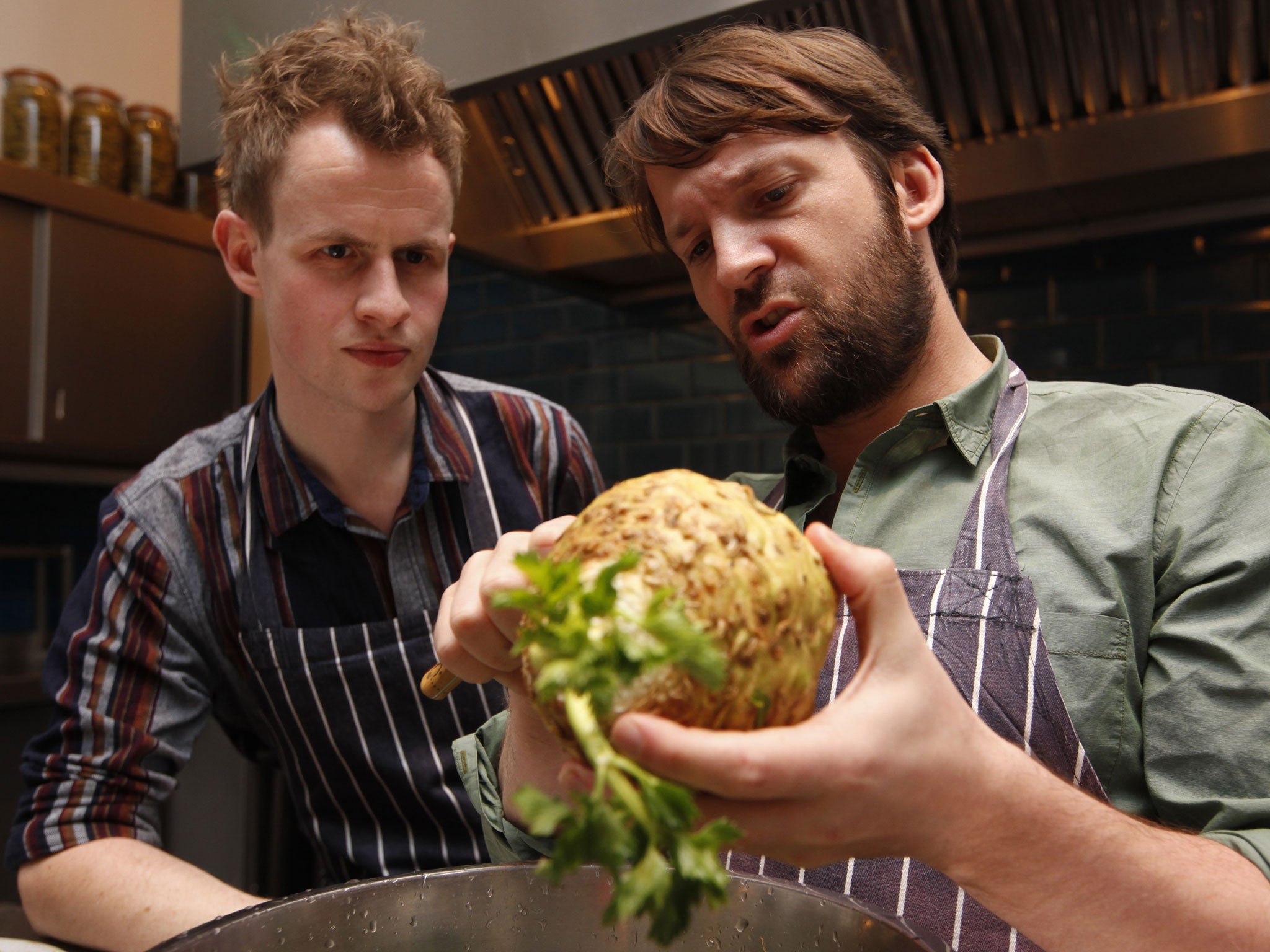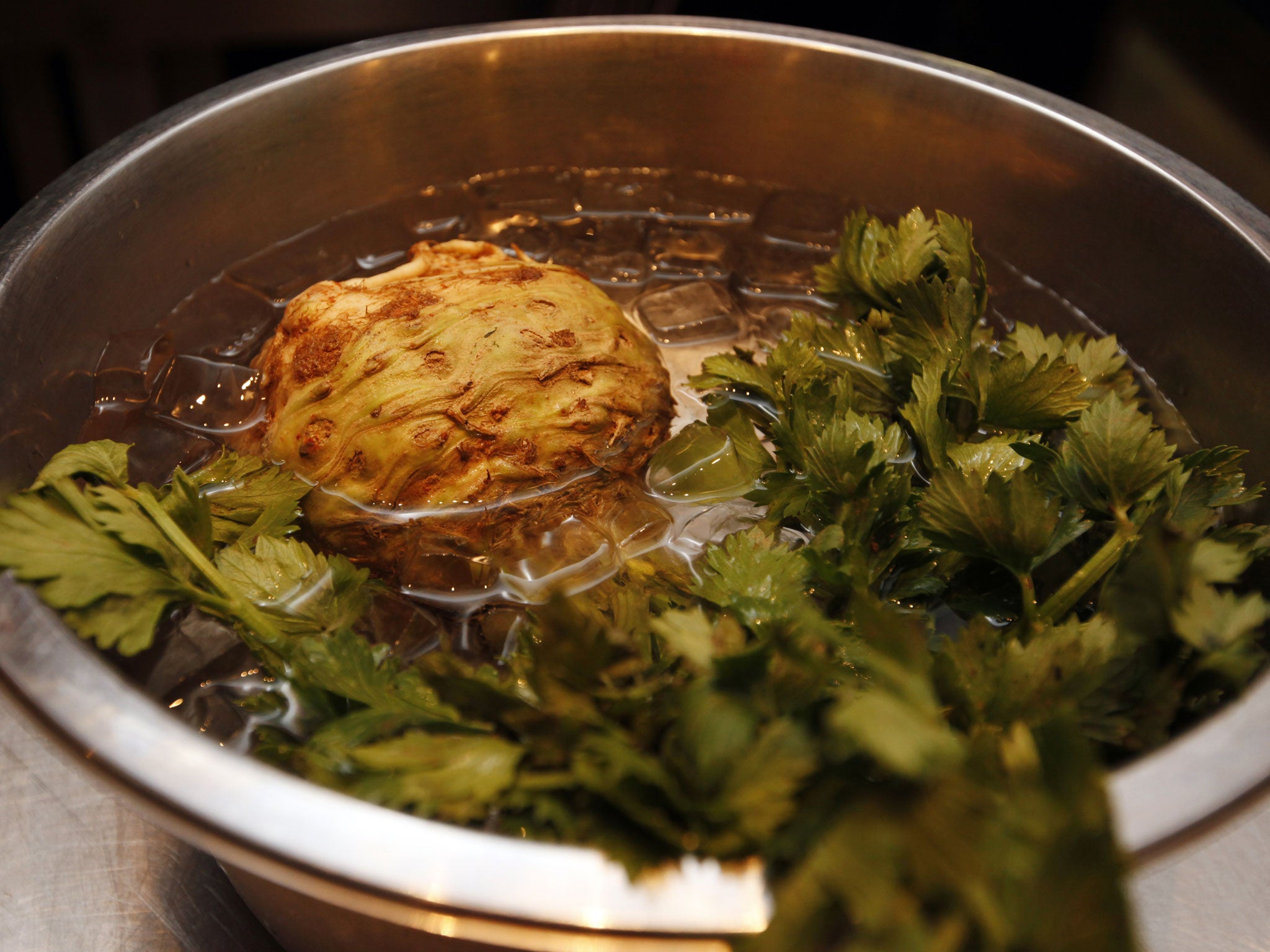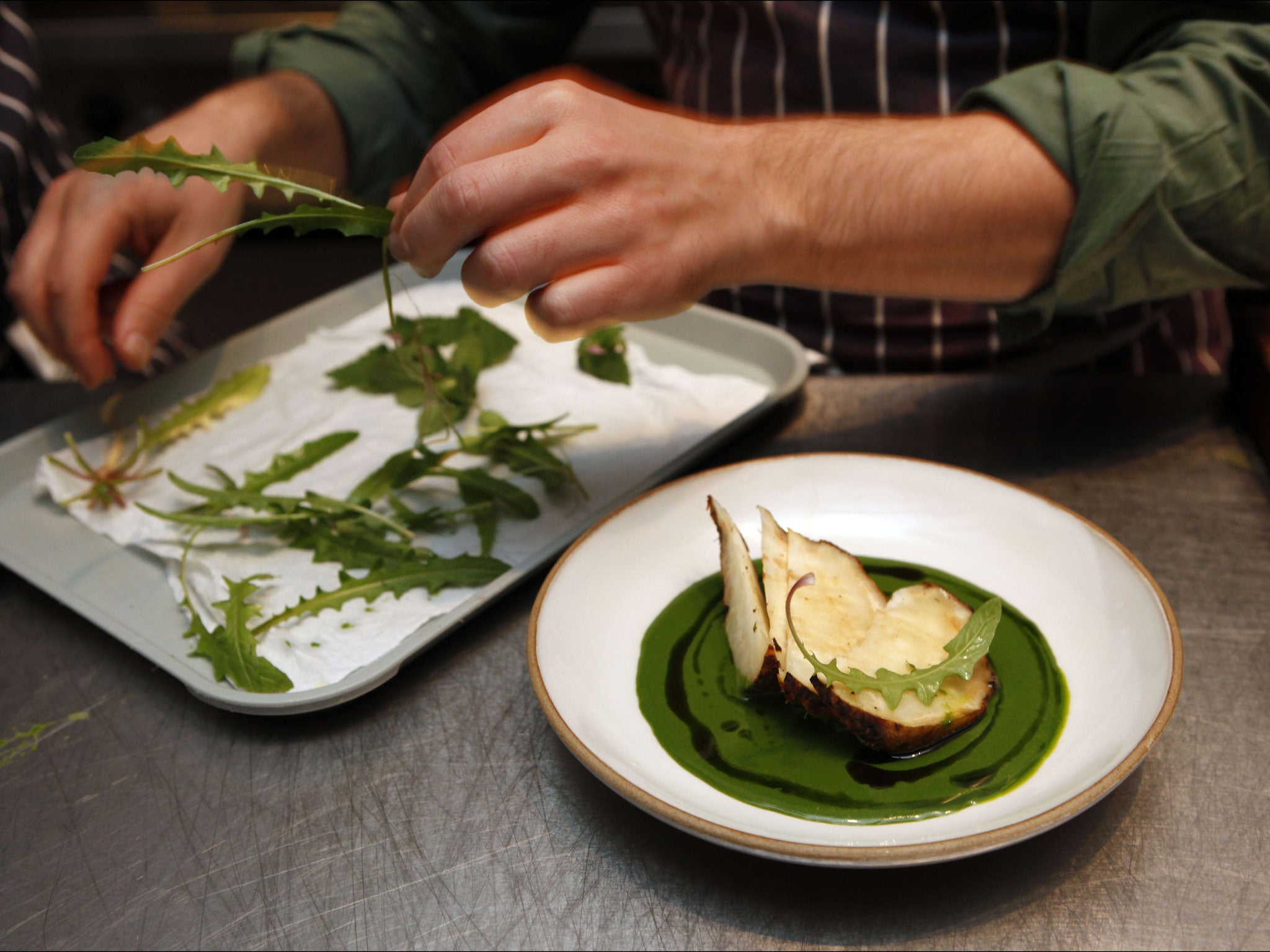Diary of the artist: Noma's visionary chef René Redzepi talks fame, cooking - and why he loves British pubs
When the spotlight became too much for Noma's visionary chef, he took refuge in his journal, now published as a book

René Redzepi is standing in front of me, pan in hand, agonising about an omelette. The double-Michelin-starred chef, whose restaurant, Noma, was three times declared the world's best in Restaurant Magazine's 50 best list, and who has himself twice been a Time cover star, is twisting himself in knots about a dish requiring one ingredient.
"I have been thinking about it for days," he says. It is not the composition of the thing that is bothering him but the fact that he will have to make it before a million or so viewers on BBC One's Saturday Kitchen. "I have never made an omelette while being timed before," he says, with a look that is surprisingly meek, given he has pretty much single-handedly put Nordic food on the culinary map.
Lucky, then, that I won't be trying his patience with eggs and a stopwatch today. We meet in the steel and denim-blue kitchen of the Clove Club, in London's Shoreditch, to cook an ingredient much closer to his heart, the celeriac. It is a very Redzepi ingredient. Since the 36-year-old chef opened his canal-side restaurant in the Danish capital 10 years ago, he has been a champion of such determinedly unsexy ingredients. Not for him the "caviar and pearls" of Californian uber-chef, Thomas Keller, nor the modernist foams of Ferran Adrià.
Redzepi's credo is simpler, more accessible. Like many a chef, he uses the best seasonal ingredients he can get, but, unlike many others, only if they are from his own region. Read his extraordinary new month-by-month, recipe-book-cum-journal A Work in Progress, from which we will be cooking today, and you see his philosophy laid out there in front of you in 10-point font. It is his iron law.
So today's celeriac, which I am now scrubbing – note, not peeling; better flavour-wise – in ice-cold water, is from a local market. I can't help wondering, though, if he feels Danish produce is superior? "Not at all," he says quickly, bouncing on his heels. "I use local produce because it is fresher. The moment you pick something from the vine or take it from the soil, you are looking at a steady decline in quality."
Does that mean he never looks further afield for ingredients? Thomas Keller, for instance, flies in lamb to the French Laundry in California from Pennsylvania. What does he make of that? "Well, we use an apple farm that is an hour-and-half drive from the restaurant," he says, with a face that hints at disappointment in himself for such wild excess. I observe that most people have strawberries in their fridge from Chile.

The man himself is a walking advertisement for the joys of home-grown greens. He spins around the kitchen like an excitable toddler, laughing as he goes. There is no sign that he is in the middle of a three-week world tour to promote the new book – "I knew what I was getting into," he says – or that his standard day starts at 6.30am when he gets his two children ready for school – "more stressful than service" – and sometimes doesn't end until 2am.
Does he sometimes find it all a little much, this adulation? Isn't it a little trying being constantly feted as culinary divinity? I suppose the money helps. He gives a gusty laugh at that and points out that he is by no means wealthy. "I have never been more excited about the restaurant and the team I have around me, some of whom have been with me since we started. I feel very happy. But, in terms of money, it is unresolved. We barely survive."
The plaudits, piled so very high on Noma, have at times felt a burden, too, he says. One feels that it was perhaps a relief to him when the restaurant didn't sail into the top spot in the 2013 world's best restaurant list (it had held the title in 2010, 2011 and 2012, before losing out to Spain's El Celler de Can Roca). "It was amazing to win back in 2010, a massive honour, but it gave me a restaurant mid-life crisis," he says.
"I began to ask myself, 'is this the top of the mountain? The peak?' I lost confidence. Decisions I had made with certainty 24 months earlier began to be sources of doubt. I worried that I shouldn't fiddle with anything now. Why would I? It was the world's best, after all. I was in a complete funk," he says.
He emerged from that mental fog in a blizzard of publisher's proofs. "I had been keeping a journal since we won in 2010, it was my own private therapy, and then when the editor of Phaidon was visiting me in Copenhagen, she asked to see it. I showed it to her and she asked, 'shall we publish this?'".
It was not a difficult decision, he says, despite it being quite personal. "Honesty is important to me, in cooking and in life," Besides, he says, in a rare flash of out-and-out pride, by that time, a third of the people visiting Copenhagen were coming for the food, and in large part that was down to Noma.

The book is a beautiful object, and his journals insightful, but most of the recipes in it demand a level of commitment beyond most of us. It certainly feels that way as I scrub, scrub, scrub my root veg.
At last, though, and thank God, the time has come to transfer it to a pan. "We need to heat about an inch slice of butter in a pan until it starts to brown and then put the celeriac in," he says, after observing that my hands are "made for typing".
Now we add the celeriac, and three times as much butter again, blowing lightly on it to make it bubble up like the sea's wash. Then we roast the celeriac – constantly turning and flipping it into the tide of butter. We'll know it is done when it falls, without friction, from a skewer inserted into its dense centre.
While we are waiting, and I continue flipping and turning, I ask him where he thinks the culinary muse resides today? He answers by enumerating the great skills of the Japanese and the long culinary history of the French, refusing to say which he respects more. Then, though, he says something surprising. Apparently he loves a British boozer.
"I really envy the pub scene here. It is so unique. We don't have anything like that where I come from," he says. Not many world-class chefs would say that, I wager.
By now, the celeriac, which I feel a close bond with, is done. We remove it from the pan, the butter still dripping from it in hopeful little streams, and lay it on a chopping board. The aroma is stunning, meaty, it fills the air like fog. He carves it and we eat. It probably cost £2-3 but tastes incredibly rich and substantial. He is an alchemist, demonstrating the wonder of foods we overlook, and doing so with humility, too. "It is the type of thing I'd serve my children or in the restaurant," he says as I rave on about its simplicity.
He is an unusual man, this Redzepi. Part-rock star, part-academic, and part-culinary diplomat; a divinity of the kitchen, but one who likes to spend his time in the pub. I leave with sore hands, yes, but also as a paid-up worshipper at the church of Redzepi.
'A Work in Progress: Journal, Recipes and Snapshots' by René Redzepi. Phaidon; £39.95
Join our commenting forum
Join thought-provoking conversations, follow other Independent readers and see their replies
Comments